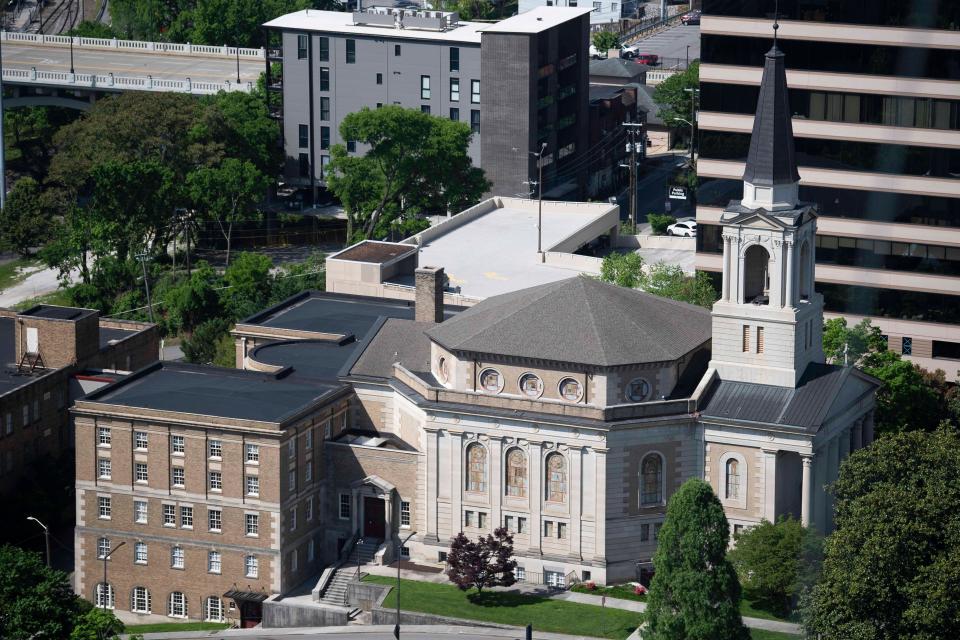In 1890, Knoxville's largest church was First Baptist, with 513 members | Opinion
I have no idea how many church members there are in the city of Knoxville. In fact, I am not sure how many churches there are in this city. While the latest telephone book lists a number of them, some are not there, including at least seven Black churches I know are missing. Perhaps some churches use private cellphone numbers to conduct business.
Information was reported in the Jan. 10, 1890, issue of the Knoxville Journal giving figures for the membership of our largest churches. W.L. McSpadden, secretary of a religious organization, compiled the numbers from his review of various churches. He discovered that the average Sunday attendance was 3,847, with a total enrollment of 5,224.

The church with the largest membership was First Baptist, with 513 and an average attendance of 317. The second-largest congregation was Third Presbyterian, with 410 members and an average attendance of 255. The smallest congregation listed was Jones Hill, with 37 members. No Black churches were cited in the survey.
Thirty-one years later, church attendance had increased dramatically, "but less than half the population was affiliated," said the Journal and Tribune of March 4, 1921. John F. Edington, executive secretary of the Southern Methodist Episcopal Brotherhood in Knoxville, conducted a survey using information from local pastors.
Hear more Tennessee voices:Get the weekly opinion newsletter for insightful and thought-provoking columns.
According to his report, the Baptists had the largest membership with 13,484. Methodist Episcopals and Southern Methodists were second with a total of 10,481. Presbyterians were third with 4,750. The Christian, Episcopal and Roman Catholic denominations combined had a total of 1,000 members. Jews, Lutherans Seventh-day Adventists and others had fewer than 1,000.At the time there were 40 Methodist churches, 36 Baptist, 12 Presbyterian and less than a dozen in other denominations. The city had a total of 116 churches with 28,181 white members and 6,304 Black members.
One new church established less than two weeks before that report was the Unitarian Universalist Church. There had been an effort to organize such a church in 1894 when the Rev. W.H. McGlauffin, pastor of the Unitarian Church in Harriman, Tennessee, came here to hold services in the Harris Hall to determine the level of interest in forming a church, but apparently he did not find enough interest at the time.
Twenty-seven years later the Rev. Joseph H. Crooker of Boston was sent here by theAmerican Unitarian Association to establish a church. The first services were held at the Lyseum Building at the corner of Cumberland and Walnut. In 1903 Crooker, a noted minister, had been called to London to preach the anniversary sermon before the British Unitarian Association. He also visited Belfast, Ireland. In Knoxville, he and his wife stayed at the St James Hotel.
Robert J. Booker is a freelance writer and former executive director of the Beck Cultural Exchange Center. He may be reached at 865-546-1576.
This article originally appeared on Knoxville News Sentinel: Opinion: In 1890, Knoxville's largest church had 513 members

